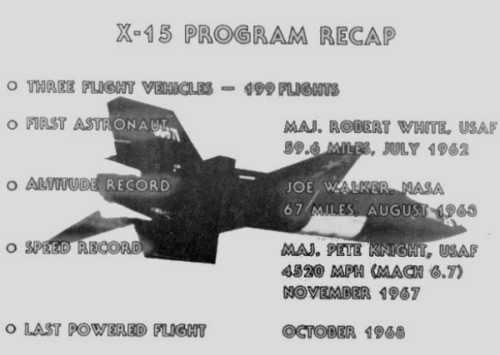the aircraft and the research program

the aircraft and the research program

Most sources agree that the X-15 research program was the most significant pure research effort in aviation history, with the possible exception of the Wright Brothers' development of the first powered aircraft.
In 1952 NACA, the predecessor of NASA, concluded that there was a need to investigate hypersonic flight. It launched preliminary studies that led to a decision in 1954 to initiate design and construction of a rocket-powered aircraft, the X-15, to undertake pure research. North American Aviation won the competition to build three aircraft and officially rolled out the first one from its hangar at Los Angeles International Airport on October 15, 1958.
From June 8, 1959, to October 24, 1968 the three X-15's made aviation history in their 199 flights. Some of their records were...
The X-15 Program Recap image is taken from the Proceedings of the X-15 First Flight 30th Anniversary Celebration, which was hosted by NASA Dryden on June 8, 1989.Thumbnail images are cropped from scans of photographic prints, mainly produced by NASA and USAF.